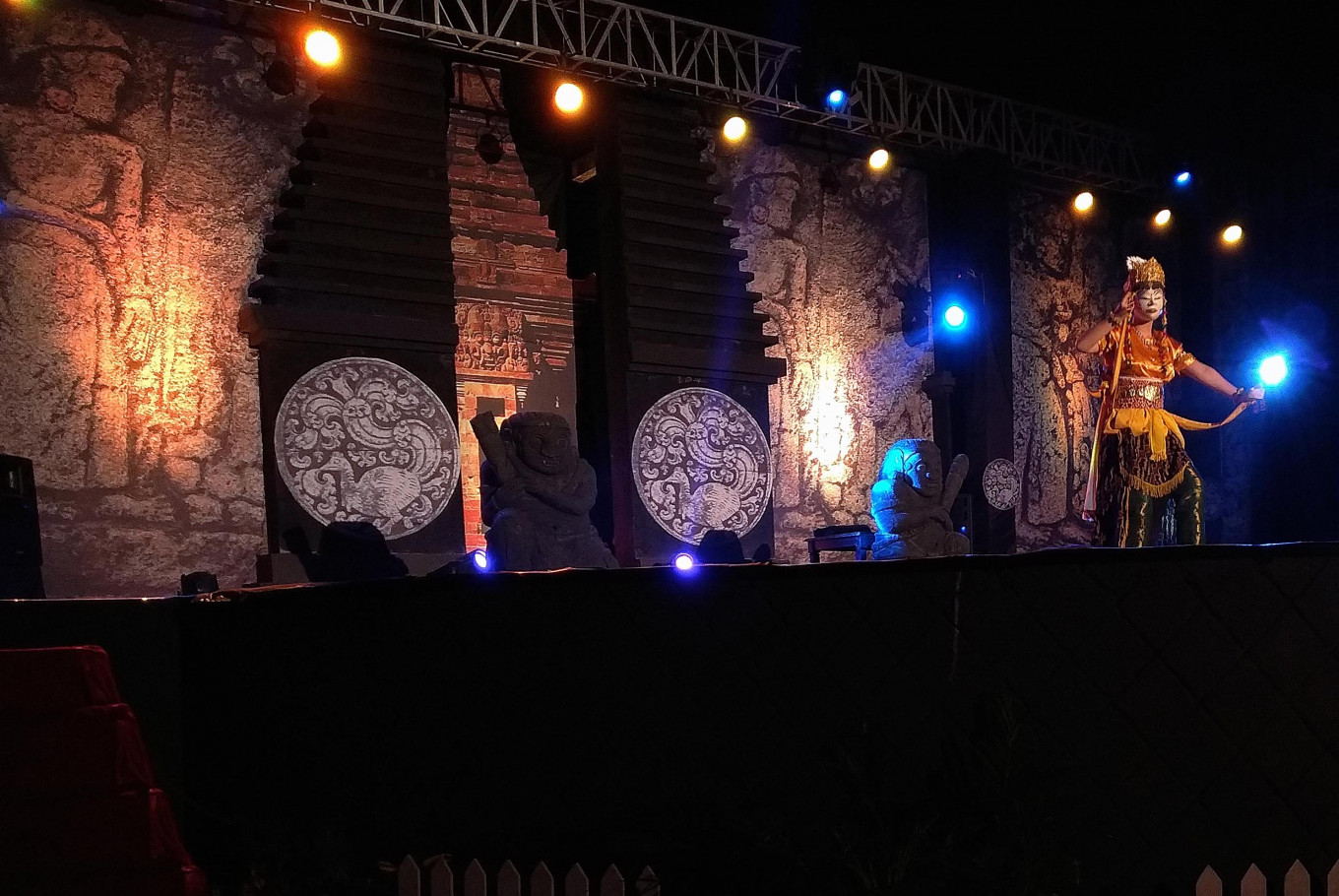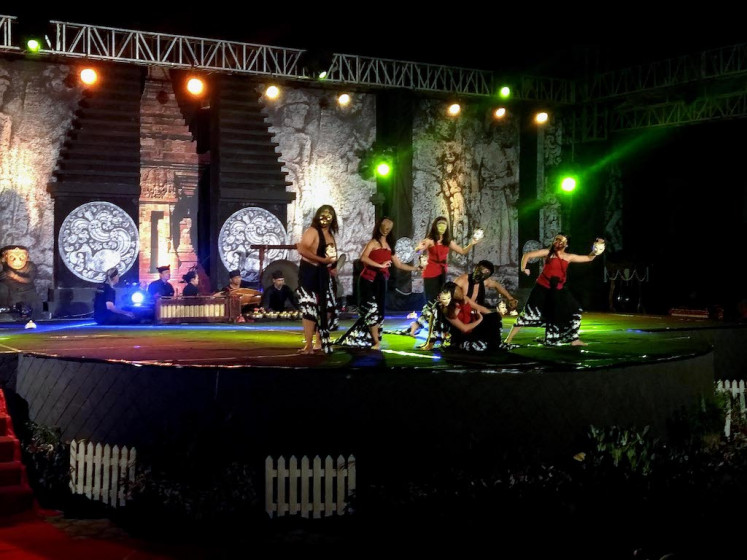Popular Reads
Top Results
Can't find what you're looking for?
View all search resultsPopular Reads
Top Results
Can't find what you're looking for?
View all search resultsTraditional, modern dances come together at Archipelago Panji Festival
The 2019 Archipelago Panji Festival featured traditional and modern dances based on the tales of Panji.
Change text size
Gift Premium Articles
to Anyone
A
traditional dance from East Kalimantan’s Kutai Kartanegara graced the 2019 Archipelago Panji Festival held at the Penataran Temple Amphitheater in Blitar, East Java, on Tuesday.
The Kutai mask dance performed by the Sangkoh Piatu Foundation from Tenggarong lasted around 40 minutes, accompanied by musical instruments that reflected a blend of Javanese, Malay and Dayak rhythms.
"This is indeed the dance usually performed at the Kutai Sultanate Palace to welcome guests or during a wedding party at the palace,” said Aji Mohamad Roni, who choreographed and arranged the music for the Kutai mask dance.
The 'Kutai' mask dance, a traditional dance of Kutai Kartanegara sultanate of East Kalimantan, is performed by the Sangkoh Piatu Foundation of Tenggarong, East Kalimantan, at the 2019 Archipelago Panji Festival in the Panataran Temple Amphitheater in Blitar, East Java, on July 9, 2019. (JP/Asip Hasani)
The dance consisted of four segments, depicting the life stories of brother and sister Princess Dewi Sekartaji and Prince Gunungsari as they go through their teenage years and move well into adulthood while trying to find where they belong in life.
Forty-eight-year-old Aji Maya Melati, considered a maestro of the Kutai mask dance, played the role of Sekartaji. Her daughter, junior high school student Siti Nazwa Alya Mariani, played the teenage version of Sekartaji. Melati’s eldest son, Mohamad Dzaki Affandi, was cast as the knight Panji Asmarabangun.
“Tonight, we showed a shorter version of the dance. Usually, a segment can last three to four hours," said Roni.
Henri Nurcahyo, head of the festival’s curator team, said the dance is proof of how tales of Panji influenced the island of Kalimantan.
Tales of Panji is widely recognized as originating in East Java in the 14th century and spread throughout Indonesia as well as Malaysia, Thailand, Cambodia, Myanmar and Laos. It narrates the story of Panji Inukertapati, a young prince that must overcome challenges to reunite with his true love, Chandra Kirana, also known as Dewi Galuh Sekartaji.
The evening also saw a contemporary mask dance performance titled Sekartaji, created by Nuryanto from the Indonesian Art Institute (ISI) of Surakarta, Central Java.
Read also: Panji Museum: Preserving fabled prince’s tales
Two male and four female dancers performed, occasionally accompanied by Javanese songs such as "Dandang Gulo", "Cikar Bobrok" and "Pangkur." It depicted the inner struggle of a princess trying to find her purpose in life.
The 'Sekartaji' mask dance by choreographer Nuryanto of the Indonesian Art Institute (ISI) of Surakarta, Central Java, at the 2019 Archipelago Panji Festival in the Panataran Temple Amphitheater in Blitar, East Java, on July 9, 2019. (JP/Asip Hasani)"The story of Princess Sekartaji is a universal message, about the human struggle in finding who we really are," said Nuryanto.
The most powerful scene of the dance happened when the dancers alternately wore and removed their masks, underlining Sekartaji’s struggle to find herself.
The second night of the festival featured the Miroto Dance Group from ISI Yogyakarta, with a contemporary mask dance mixed with modern ballet. The mask and wayang golek (wooden puppet theater) dance by Jaka Baru Studio from West Java also took part in the festival, followed by Sang Setyawan, a dance-drama by Pendopo Studio from Blitar.
The 2019 Archipelago Panji Festival was established by art and culture enthusiasts and practitioners in East Java around 10 years ago to spread the popularity of the tales.
Tales of Panji was included in the Memory of the World by UNESCO in October 2017.
Henri, who wrote a book on Panji stories, said Hayam Wuruk, who ruled the Majapahit kingdom in the 14th century, tried to oppose the dominant Indian culture in Java and other regions by spreading stories of Panji.
"Hayam Wuruk himself danced with a mask to portray Panji Inukertapati. He also ordered the making of Panji reliefs in dozens of temples, including in Blitar’s Penataran temple," he said.
The 2019 Archipelago Panji Festival took place in Blitar, Kediri, Malang and Tulungagung simultaneously.
"We hope the stories of Panji will gain a place in the hearts of Indonesian people," said Henri. (nic/wng)













